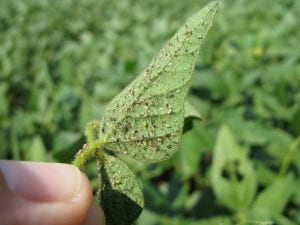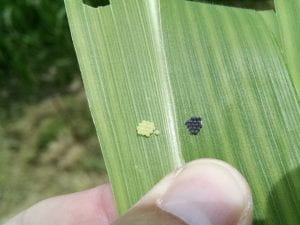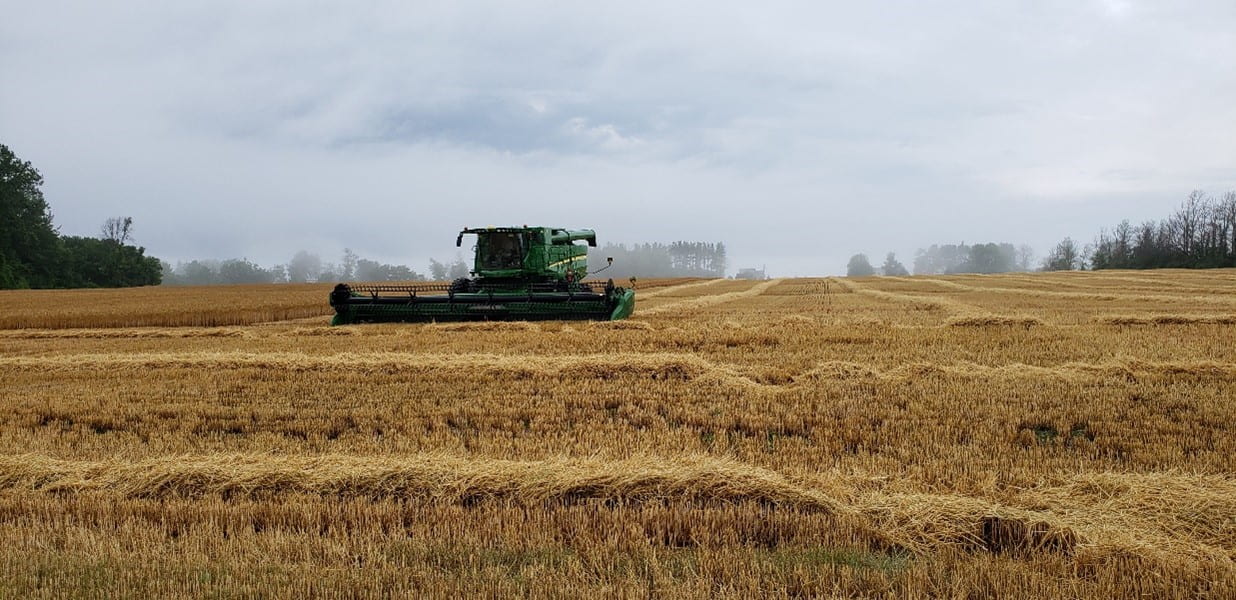Take Another Look at Soybean Aphids

Soybean aphids (SBA) were very plentiful across the region and some fields were above threshold. Take another look! The hot, rainy, muggy weather were perfect for a beneficial fungus which attacks SBA. It can move in quick and decimate an aphid population in a couple of days. Infected aphids will turn from green to pink and eventually turn black. I have seen this process happen many times over the years. Some will usually survive but the other beneficials such as ladybugs and syrphid fly larvae will clean them up. Most soybeans are R2 (full flower) to R3 (Beginning to pod) right now. It is suggested to continue to scout for aphids until the R5 stage (seed is 1/8 inch long (3 mm) long in the pod at one of the four uppermost nodes on the main stem). We can usually expect to see another peak for SBA sometime in August.
Everything is Lining Up for White Mold Issues

With most fields at full flower and beyond, we have to continue to think about white mold. Many fields have closed canopy which only adds to the perfect weather conditions for the mushrooms to emerge and sporulate. Soybeans will continue to flower which is why a second fungicide application can be necessary for effective management. Infection begins with a water-soaked lesion originating at a node. The sclerotia (reproductive structures) form inside and outside the stem within the cottony white mold mass. Sclerotia are dark, irregularly shaped bodies ¼ to ¾ inches long containing hardened mycelia and are the “seeds” for future infections. Here is a NWNY Team video on the specifics of white mold biology and management.
Western Bean Cutworm Moths Have Emerged

We started catching male WBC moths in our pheromone traps last week. This moth overwinters here unlike black cutworm and common armyworm. WBC females lay their eggs on the top side of the leaf and prefer pre-tasseled corn. One plus is that much of our corn was planted earlier and a higher percentage of our acres are already tasseled. Scouting for egg masses should be more focused on later planted fields that are still vegetative. Mike Hunter of the NNY Team found a WBC egg mass this week in Jefferson County. Larvae will briefly feed on the tassel and pollen before moving inside the corn ear. Remember, only plants with the Viptera Bt will have some protection from feeding injury. Threshold is 5% or greater of the plants with egg masses. Chris DiFonzo out of Michigan State University Extension, has a good article on how to scout and make insecticide application decisions.
Wheat Harvest Woes
We had record wheat yields and the price but the weather just would not cooperate this year. Those growers that had the opportunity to harvest 4th of July weekend had excellent quality despite high moistures. Things went rapidly downhill as rain and storms never let up after that and the wheat quality decreased. Unfortunately, most, if not all of the wheat coming off this week is sprouted and will be downgraded to feed wheat. Many growers have asked about just leaving the straw in the field for the nutrient value. Numbers from Ohio and Michigan State have shown that a ton of wheat straw contains from 11-13 pounds of N, 3-3.3 pounds of P and 20-23 pounds of K. For further details see this article from OSU.



